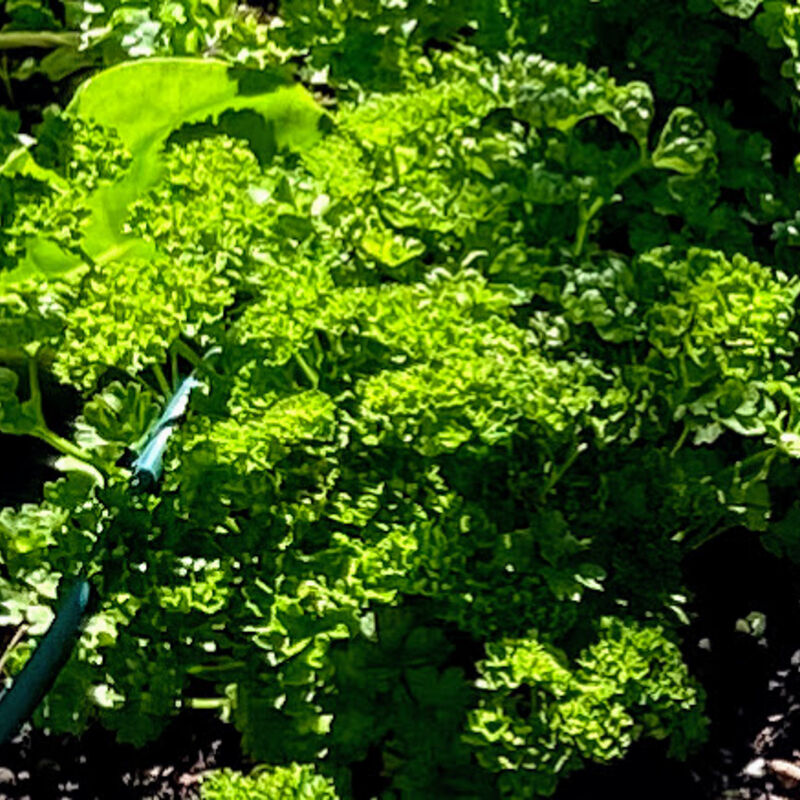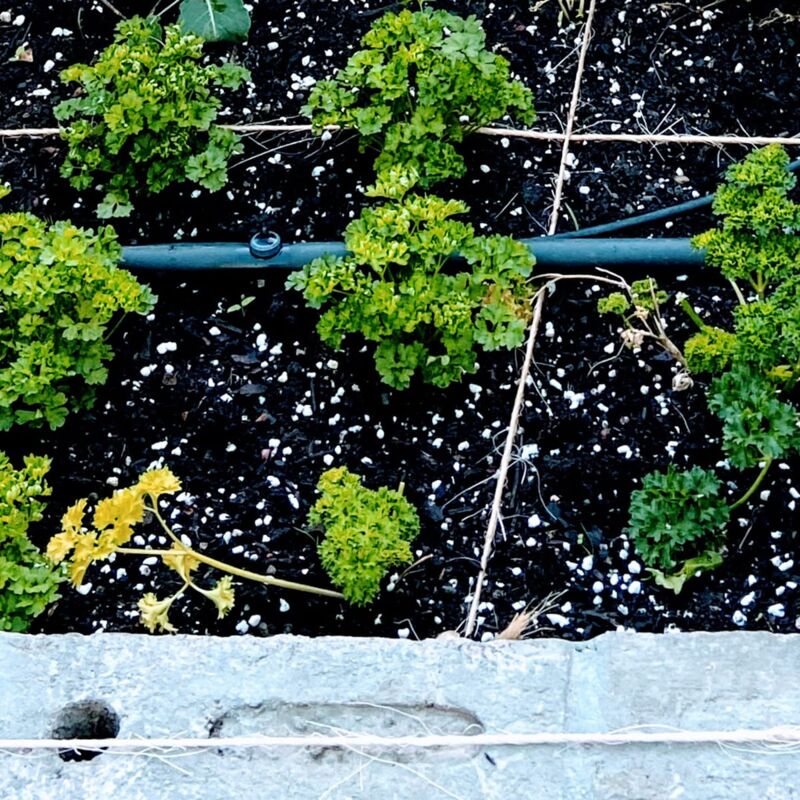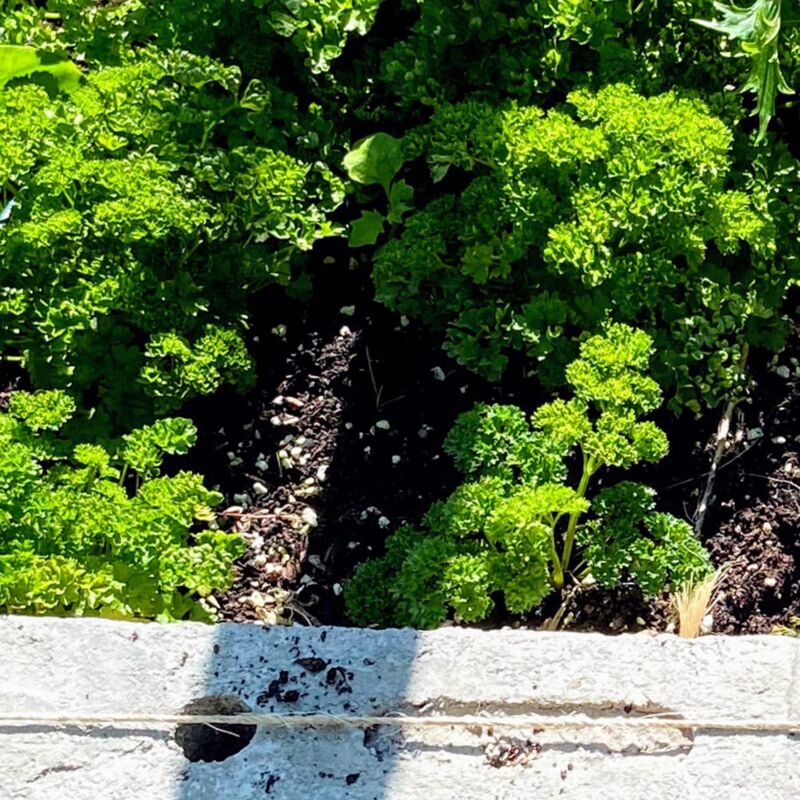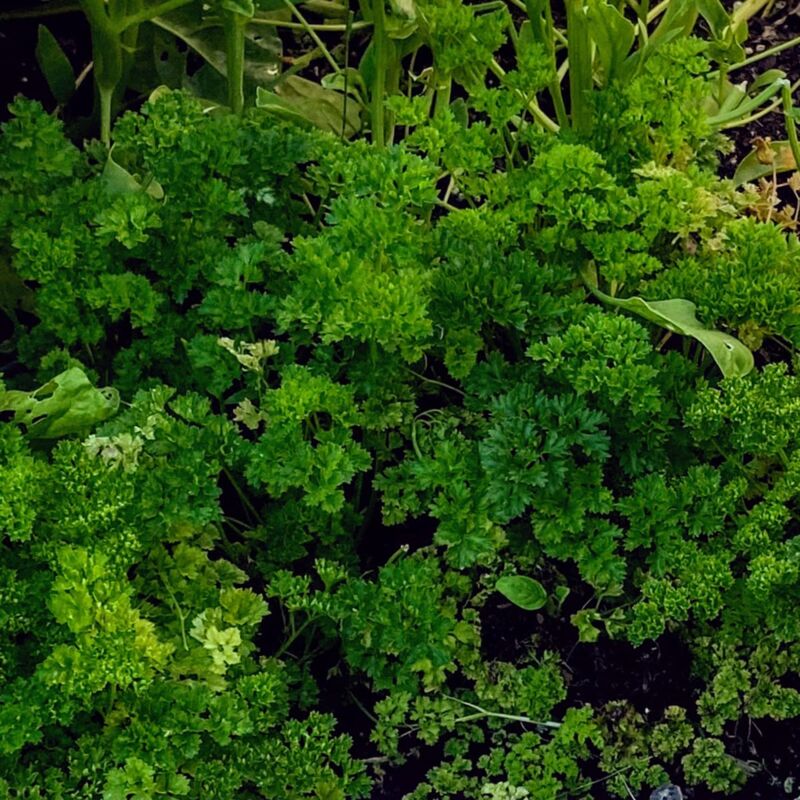Parsley

Petroselinum crispum, Family: Umbelliferae
Parsley is known as the king of herbs and has been used since ancient times. It was widely consumed by the Romans and in ancient Greece. Parsley is usually grown as an annual because it goes to seed in its second year. The two common varieties are the familiar curly-leaf and the Italian, or flat-leaf.
Seeds to Seedlings
Parsley does best in moderately rich soil, with a pH of 6.0. It can be a slow germinator and sporadic; for best results, soak seeds in water for 1 to 2 hours before sowing. Sow seeds ¼ of an inch deep where they are to grow. Because of the slow germination period, I buy a tray of seedlings from the nursery. Six plants will easily provide enough fresh leaves for even the most ardent parsley user.
Growing Productive Plants
When transplanting, avoid disturbing the roots. Space plants 10 inches apart.

August 20

September 15

December 15
Parsley must be watered well; I use both the drip and sprinkler systems in my small home garden to keep the soil reasonably moist and digging in a lot of compost throughout the summer.
Light
Parsley can be grown in full sun but can be grown in the sem-filtered shade or morning sun and afternoon shade.
Fertilizer
I dig in half handfuls of compost every two weeks to three weeks around the plants.
Pruning
The flowering period can be postponed by picking the leaves often and cutting down the flowering stems.
Companion planting and pest management
Parsley enhances asparagus and tomatoes and repels asparagus beetles and carrot rust flies.
Harvesting
Once plants form good-sized clumps, I begin harvesting leaves as needed, cutting the outer stems first. I allow 2 to 3 weeks for regrowth before I harvest the same cluster of plants again.
Culinary
Parsley can be used to add a special touch to almost any dish. It has a delicious taste and is very nutritious. It can be used in soups and stems, sprinkled on to vegetables and mixed with cream cheese and is well known as a garnish.